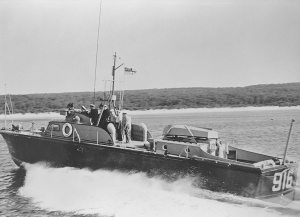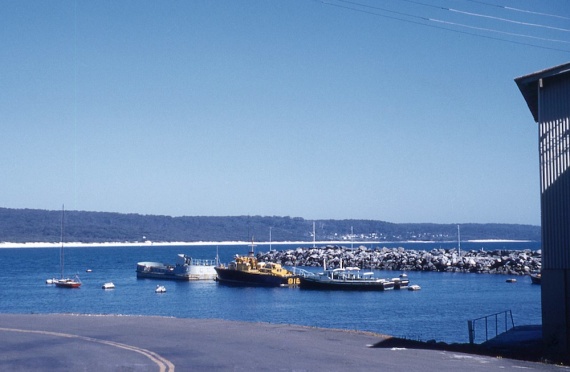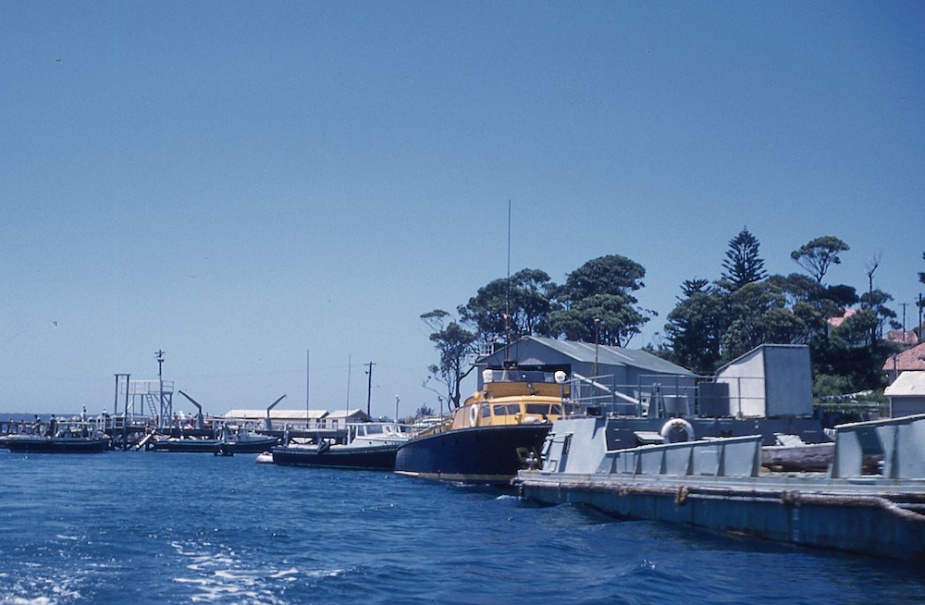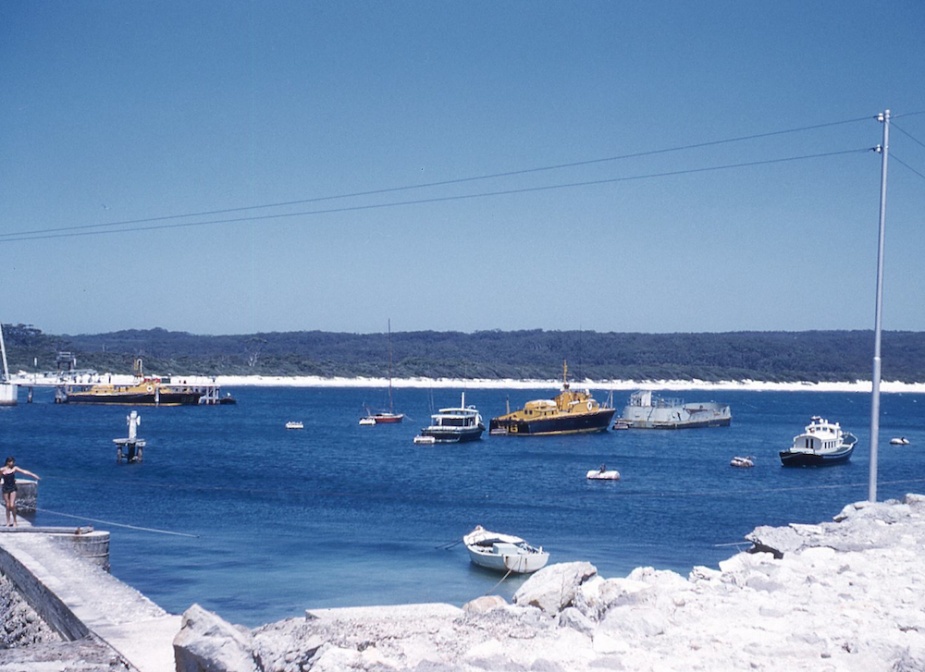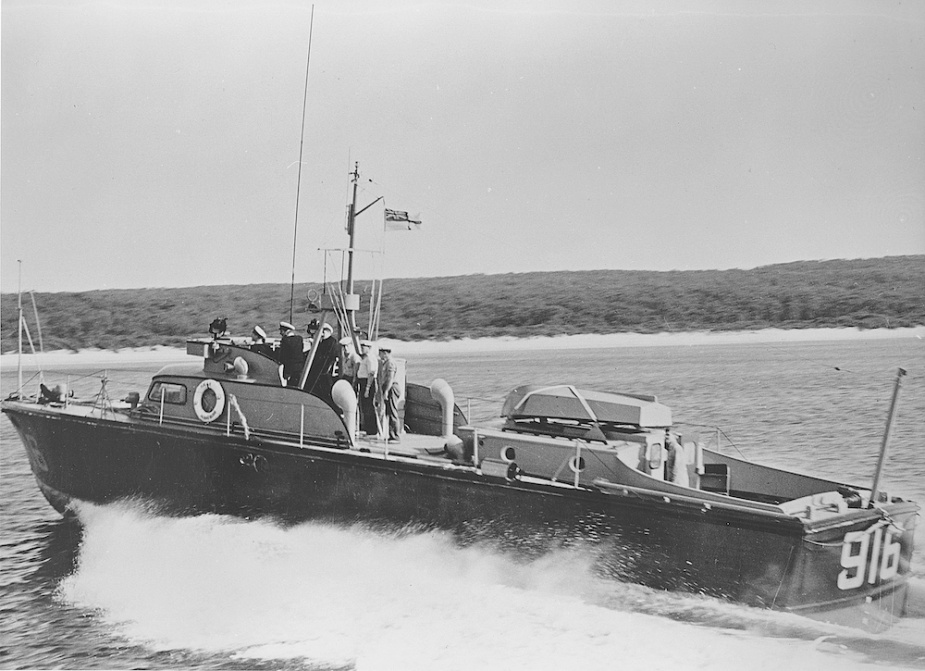HMAS Air Trail
| Class |
Air/Sea Search and Rescue Vessel |
|---|---|
| Type |
Air-Sea Rescue Launch |
| Pennant |
ASR916 |
| Builder |
Fellows & Stewart Inc, USA |
| Commissioned |
8 February 1945 |
| Decommissioned |
2 August 1946 |
| Fate |
Sunk as a target 1968 |
| Dimensions & Displacement | |
| Displacement | 24 tons |
| Length | 63ft (19.2m) |
| Beam | 15 ft (4.57m) |
| Draught | 3 ft 4 in (1.01m) |
| Performance | |
| Speed | Up to 28 knots |
| Complement | |
| Crew | 7-8 including 2 RAAF telegraphists |
| Propulsion | |
| Machinery | Twin Hall-Scott petrol engines |
| Horsepower | 1,200 bhp |
| Armament | |
| Guns | 2 x twin Lewis guns |
HMAS Air Trail was one of 21 air/sea rescue vessels originally built in the USA and Canada between 1943 and 1945, and transferred to the RAN under the Lend-Lease Agreement. These vessels were originally designed as anti-submarine craft but their high speed and manoeuvrability made them ideal as search and rescue vessels. In this role, their hulls were painted black and their upper decks and superstructure painted bright yellow. One vessel, HMAS Air Sprite, was built locally in 1960 to an almost identical design.
Air Trail was commissioned on 8 February 1945 in Sydney under the command of Sub Lieutenant Victor Maddison, RANR, and was officially listed as a tender to HMAS Madang. Her first few weeks in commission were spent alongside in Sydney preparing for sea and conducting trials before proceeding to Jervis Bay in March for ASR duties. She commenced passage northwards for Madang, New Guinea, in April, her journey hampered by inclement weather. She arrived at Madang on 18 June and immediately began ASR and other harbour duties.
She moved to Biak in July where she conducted ASR operations until the end of August and then spent the rest of the year operating between Madang and Biak. She commenced her journey back to Australia on 4 January 1946 and decommissioned at Sydney on 2 August.
She recommissioned on 19 April 1949 as a search and rescue vessel operating primarily between Sydney and Jervis Bay. She remained listed as a search and rescue vessel until 1965 and was sunk as a target in 1968.

